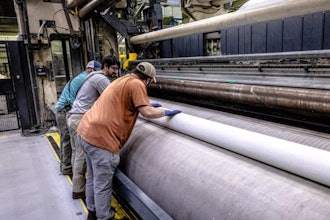You know who your competition is, right? You’ve got your sector thoroughly mapped out. And you’ve revised and refined your business strategy, enhancing your position by accelerating product innovation cycles, increasing speed-to-market and raising the performance or cost-efficiency of your products. This is Business 101. There is no secret to how you win in the marketplace.
In the 20th century.
But that was then, and this is now: your growth isn’t everything you want it to be. And maybe you’ve seen other sectors upended by competitors they never saw coming — hotels or car manufacturers. When a search engine becomes a player in the automotive market, you know that the rules of the game have changed.
How do you prepare for what you don’t see coming? By recognizing there’s a new, continually evolving rulebook — and maybe writing a few of the new rules yourself.
To appreciate some of the new opportunities for you to change the rules, let’s look at how emerging business models and technologies are leading to new competitors from outside your sector. We’ve identified three major sources of game-changing competition:
Changing the formula
Let’s say you’re a chemical manufacturer. One of your primary products is fundamental to another industry, but you must manage its environmental-impact issues. You keep increasing safety with each product cycle. You introduce a higher-performance version: your customer doesn’t need to buy as much, but you can raise prices to sustain revenues.
Then another chemical company that had never competed in your marketplace before introduces an entirely new product. The competitor developed it for a different market, but then adapted it for your primary market. It costs more and requires more units to get the job done, but its formulation avoids the environmental impacts of the traditional product — which makes it easier and less costly for your customers to comply with increasingly rigorous environmental regulations.
Such a substitute product can be a major threat because it provides an alternative for customers who are looking to make big competitive leaps rather than incremental improvements. You can start to counter this threat by researching the world outside your marketplace. Aggressively and systematically track emerging technologies whose applications could migrate to your sector. Start a skunkworks tasked with doing radical innovation. Essentially, make a big competitive leap of your own.
Reinventing the machinery
Sometimes, customers looking to make a big competitive leap don’t wait for you, or your traditional competitors, to enable it. They make a unilateral change whose ripple effects rock your boat. Perhaps you sell a feedstock to a manufacturing process. You compete against other feedstock producers on quality, delivery timing and price.
Then, a company that makes the equipment that utilizes your feedstock introduces a breakthrough technology. Its combination of digital sensing, optical scanning and real-time processing adjustments cuts waste dramatically, which also reduces feedstock demand. Once your customers hear someone say “I can create that component with 20% less feedstock and pass the savings on to you,” you’re going to suffer a drop in demand. This threat isn’t just about losing revenues; it’s about your company’s role in an industry being permanently disrupted.
You can’t turn back the clock on these innovations, but you can preempt it. Seek out other players in the ecosystem, such as equipment manufacturers. Look for opportunities to partner with them in pilots that enable you to adjust and tune up your feedstock, and then have it certified to run with their next-generation equipment. This can give you a competitive advantage for the feedstock market that remains.
Leveraging digital
Everyone is introducing digital into their business models, processes and data-analytics strategies. Digital technologies enable massive shifts in costs, in product development and in suppliers. They are remaking entire industries, generating all those high-profile, “the sky is falling” stories.
The challenge here is to realize that every sector, every business and every process is vulnerable to extreme change through digital technologies. Something as mundane as putting sensors into food-storage bins so they don’t have to be manually checked for volume and cleanliness in the warehouse before the supplier ships can have a dramatic effect. Not only will this reduce operating costs (process, inventory management and waste), it can reshape an industry. A food-ingredient supplier could take over bin management for a food manufacturer in the same way that trucking companies took over shipping-logistics management for customers who had previously only looked to them to supply truck capacity. It changes business models from being exclusively product-driven to having a value-added service component.
So, knowing that competitive challenges may come from places that weren’t on your radar before, what are you going to do about it?
Start by expanding your thinking through guided “Art of the Possible” analysis. This helps you identify where these threats — to what you sell, how you do business and even how you manufacture product — may come from. Don’t just look at your sector and the manufacturers you compete with. Consider your customers’ challenges — What are the megatrends that might most impact their markets? How are their customers’ needs changing? Then, ideate innovative solutions that will make them more competitive in their sector. The most successful companies invest heavily in analyzing the experience of their customers, looking for opportunities to meet a need even if the customer can’t yet articulate that need. If you can create those new solutions — because you know their experience and their marketplace so well — you can become the solution-provider of choice, expanding your product/solution line in the process. It can change your whole value proposition.
To deliver such differentiating solutions of your own, you’ll probably have to take a different approach to innovation. Use rapid sprints with interim versions co-innovated with friendly customers. Work with collaborators across your ecosystem to develop new solutions: suppliers, technology providers, and, of course, customers.
Most critical, however: take the initiative to be the disrupter. Be the one that others don’t see coming.
Jerry Gootee and Gregg Sutherland are both partners with EY.























